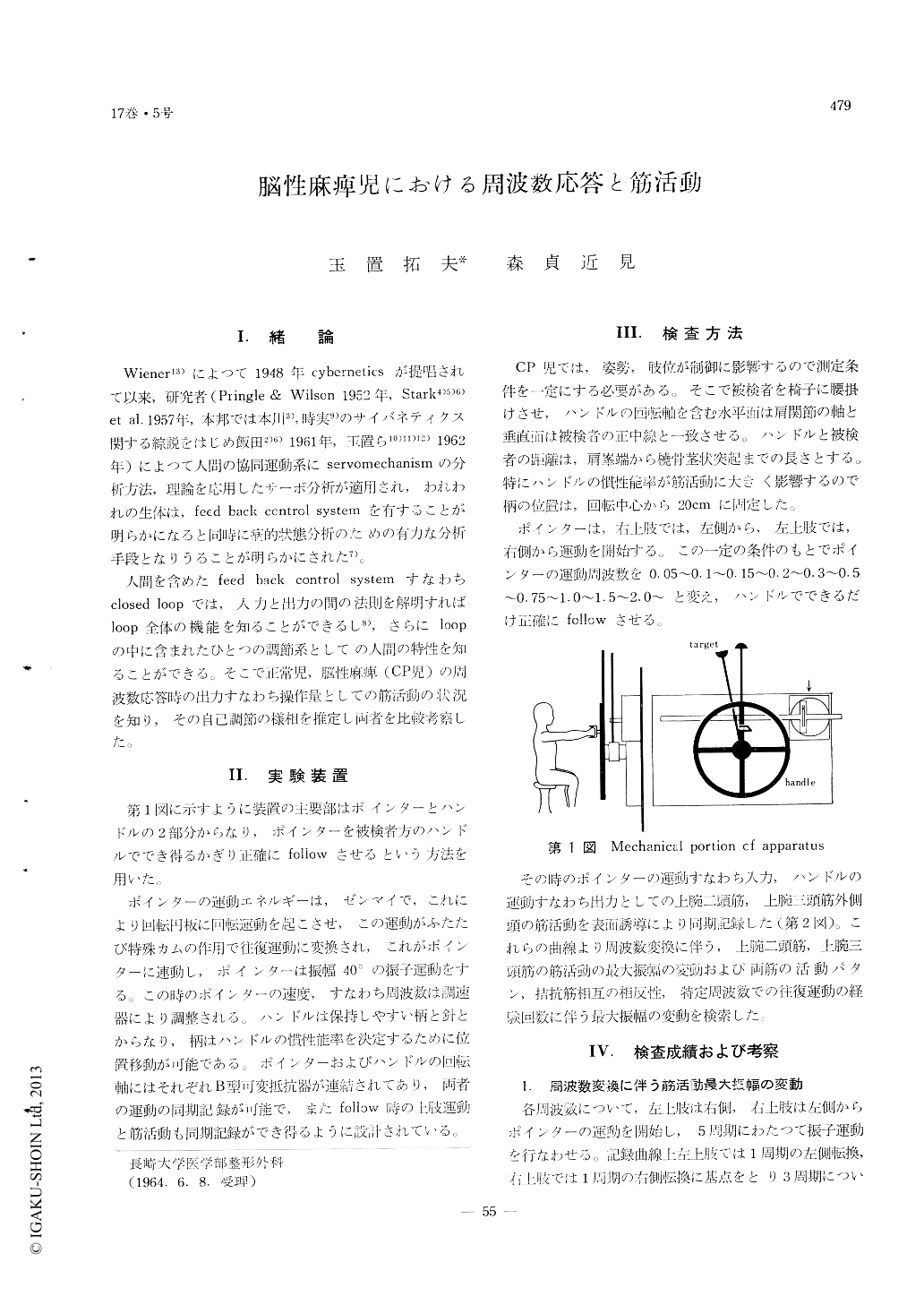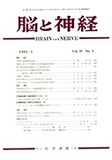Japanese
English
- 有料閲覧
- Abstract 文献概要
- 1ページ目 Look Inside
I.緒論
Wiener13)によつて1948年cyberneticsが提唱されて以来,研究者(Pringle & Wilson 1952年,Stark4)5)6)et al. 1957年,本邦では本川3),時実9)のサイバネティクス関する綜説をはじめ飯田2)6)1961年,玉置ら10)11)12)1962年)によつて人間の協同運動系にservomechanismの分析方法,理論を応用したサーボ分析が適用され,われわれの生体は,feed back ccntrol systemを有することが明らかになると同時に病的状態分析のための有力な分析手段となりうることが明らかにされた7)。
人間を含めたfeed back control systemすなわちclosed loopでは,入力と出力の間の法則を解明すればloop全体の機能を知ることができるし8),さらにloopの中に含まれたひとつの調節系としての人間の特性を知ることができる。そこで正常児,脳性麻痺(CP児)の周波数応答時の出力すなわち操作量としての筋活動の状況を知り,その自己調節の様相を推定し両者を比較考察した。
Cerebral palsied children were instructed to control the pointer so as to follow up the pendulous target in various frequencies, and subjected to the frequency response sest.
Cathode oscillograph made synchronously possible both recordings of movements of target and pointer as well as global trace derived from the biceps and triceps muscle.
With the logarithmic values of frequencies on abs-cissae, averaged amplitude of global electromyogram was plotted in ordinate. Pattern of reciprocal inner-vation between the antagonistic muscles was also examined with special reference to its transformation following the application of various frequencies.
Normal subjects showed the steady frequency response in terms of amplitude of global electrom-yogram and pattern of reciprocal innervation with systematic alteration in harmony with the various frequencies. In striking contrast with normal children most of cerebral palsied children revealed failure or lack or instability of frequency response in terms of muscular activity and deviation in pattern of recip-rocal innervation. Cerebral palsied children were found to have peculiarly their own servomechanism.

Copyright © 1965, Igaku-Shoin Ltd. All rights reserved.


